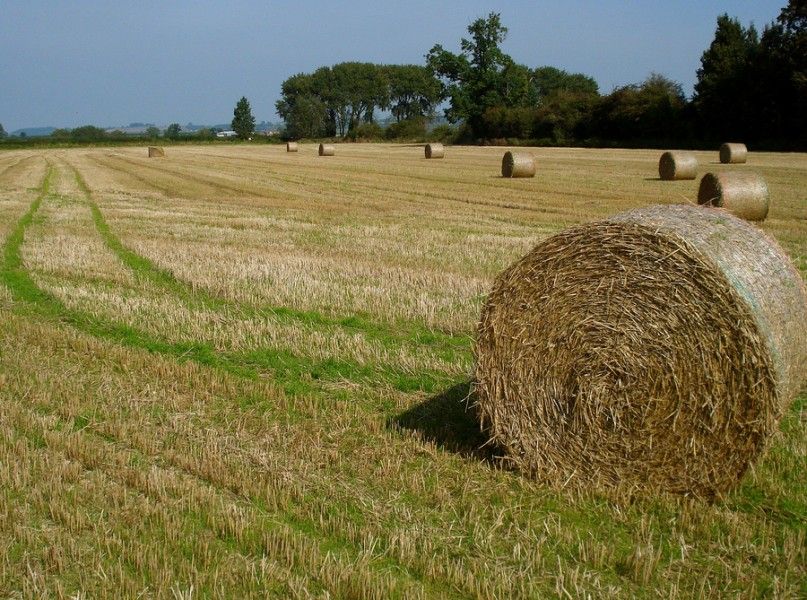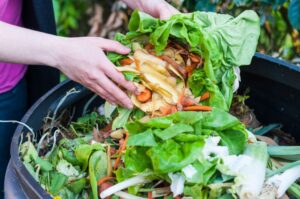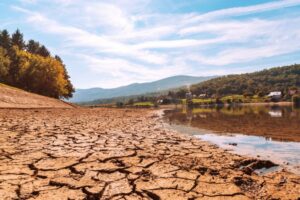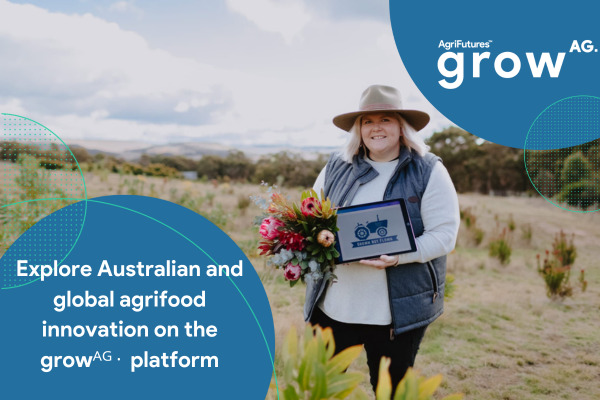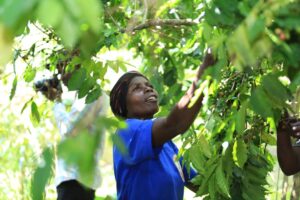 By: Fiona Harvey, Award-winning environment journalist for the Guardian. This post originally appeared on Ensia.
By: Fiona Harvey, Award-winning environment journalist for the Guardian. This post originally appeared on Ensia.
“When [the trucks] came through they could not get access to their objective. They really had to push their way through here. The people did not actually accept this idea of palm oil, and these things. The people said ‘No, we will not allow the road.’”
That’s how Micheal Kyibah, clan leader of Bugain Baglos in Papua New Guinea, described the scene in the nonprofit Oakland Institute’s film “On Our Land” after a logging company tried to build a road and clear land for new palm oil plantations in his area. Local people were not consulted, he said, and objected to the development. After the plans went through anyway, residents lined the route of the new road to try to have their voices heard. “People in higher places force the villagers to go through this,” Kyibah said.
This kind of deal is commonly known as a “land grab”: Companies or countries, mostly in the developed world, buy up tracts of land — as much as a million hectares at a time — in poorer nations to boost their capacity to produce food or biofuels, obtain minerals, or conduct other activities such as logging. Such transactions have increased in the past decade, with more than 55 million hectares targeted in more than 1,000 cross-border deals in scores of countries, according to the Land Matrix global land monitoring initiative, which tracks such deals.
Many have raised concerns about these deals because of the risk that poorer countries will give up their land to richer ones without receiving appropriate compensation or because of the environmental destruction that can ensue. Others, however, regard at least some of them as much-needed investment in the development of natural resources and agriculture in areas that have suffered from a lack of attention.
Can large transnational land deals be beneficial? If so, what can we do to make sure the benefits sufficiently outweigh the costs and are appropriately distributed? As with so many things, the devil is in the details.
Access to Advantages
Cross-border land investments have been a significant feature of international relations in the past decade for a number of reasons. Rising food prices play a major role, and growing populations with a rapidly rising middle class in countries such as China and India have increased the pressure on fertile land. As climate change also takes hold, some countries express fear that their own resources are under threat, and have looked to find resources elsewhere that will secure their future food supplies.
By growing crops in other countries, governments and companies from regions where resources are being depleted can gain access to natural advantages elsewhere. A metric ton of wheat grown abroad, for example, can save 1,300 cubic meters of domestic water for an arid country.
“We believe this is more about water than it is about land,” says Carin Smaller, advisor on agriculture and investment at the International Institute for Sustainable Development. Smaller cites one deal by a company she cannot name whereby an extensive tract of land has been bought up because of the access it gives to a mountain and an important river. “The company said to me they had bought that land in order to have control of the water supply,” she says.
Water insecurity is the key factor behind Middle Eastern companies’ increasing interest in overseas land deals, say Smaller and other analysts. For decades, Saudi Arabia and other Gulf of Arabia states had focused on a policy of self-sufficiency, trying to grow enough wheat and other staple crops on their own land to feed their burgeoning populations. But this policy was ecologically disastrous — water from underground aquifers was needed to feed the endless thirst of the crops, resulting in rapid depletion at an unsustainable rate. In the late 2000s, these countries made a conscious change of policy: Instead of trying to grow enough at home, they would invest in fertile and well-watered land abroad, where the same crops could be grown at a fraction of the cost.
Mineral rights are also a consideration. In many countries, landowners own the rights to the extraction of subsurface resources, such as coal, oil and metal ores. This appears to be the motivation behind many speculative deals, particularly the big deals that involve hundreds of thousands or millions of hectares, according to Smaller. “What’s below the surface is clearly the target in some deals,” she says. “This often happens before the potential minerals have been fully explored, and companies stake claims with the intention of prospecting over a wide area.”
An area of more than 44 million hectares — close to the size of Spain — has been targeted in transnational deals.
Whatever the motivation, there is no question that transnational land deals are a big deal. An area of more than 44 million hectares — close to the size of Spain — has been targeted in transnational deals, counting those that have been completed, are underway or have run into trouble or failed (a small percentage — only 76 out of more than 1,000 deals), according to Land Matrix. The U.S. tops the list of investor countries, with 7 million hectares of deals, and the United Kingdom comes in fourth place with 2.3 million, but much of this is due to companies and investment vehicles domiciled or incorporated in these countries but with their main operations elsewhere. The second biggest investor country is Malaysia, with investments totaling more than 3.3 million hectares in other countries, while the United Arab Emirates comes in third with 2.8 million. India, Singapore and Brazil are also completing an increasing number of deals, and China — perhaps surprisingly, given the publicity some of its deals have received — takes 10th place, according to the Land Matrix, with 1.3 million hectares targeted.
New evidence is emerging that the phenomenon that was concentrated on Africa for most of the last decade is now having massive impacts elsewhere. Topping the list of countries targeted by land buyers is Papua New Guinea, where 3.8 million hectares are subject to interest, followed by Indonesia and South Sudan, with close to 3.5 million hectares each under target. Most of the other target countries are in Africa, including Mozambique, Democratic Republic of the Congo, Liberia and Sudan. But Ukraine also ranks highly on the list, with investors interested in 1.6 million hectares there.
And although the rate at which land is being bought up has tailed off of late, with fewer mega deals reaching fruition than in the peak year of 2010, millions of hectares now under contract have not yet been put to their full use. Only when that starts to happen on a large scale will we be able to see the true impacts of these deals.
The Good and the Bad
When done poorly, without proper consultation, impact assessment and local buy-in, large-scale international land deals can be a source of bitter conflict, sometimes involving the wholesale displacement of indigenous peoples, the break-up and impoverishment of established communities, and, in the worst cases, dozens or even hundreds of deaths. Environmentalists recently commemorated the death 25 years ago of Chico Mendes, a campaigner against land grabs in Brazil, who was shot dead by a cattle rancher’s son. His death was just one among many hundreds in South America and presaged what has become an increasing toll throughout the world.
“We have worked with people who have been displaced, who have suffered intimidation and violence, and in some cases have been killed,” says Kate Geary, a policy advisor at Oxfam. “It can be very dangerous for people to try to stand up for their land rights in the face of land grabs.”
When done well, however, transnational land deals can be a boon to developing countries, says Lorenzo Cotula, a principal researcher at the International Institute for Environment and Development and author of a recent book on land grabs. “The fact that there is renewed interest in investing in agriculture is very positive — for far too long, this has been neglected, and this is a big public and private investment.”
Smaller agrees. “The rural sector desperately needs investment,” she says. “Obviously not all investment is going to have great results, however.”
So far there have been many more bad examples of these deals than good ones. A wide-ranging study of Africa by Cotula came to a clear conclusion that the large-scale deals that have been done to date there have failed to bring the advantages that some have claimed, with most people on the lands involved instead seeing their livelihoods removed and their lives damaged, sometimes irreparably.
“Land is one of the most emotional subjects there is. People naturally feel an enormous attachment to the land they live on — it provides everything they have — and we need to understand and respect that. Land is not a commodity.” — Kate Geary
“The growing body of evidence shows that the majority of large-scale land deals have had net negative impacts on local populations,” says Cotula. “They have rendered people landless without compensation, have broken links between land and livelihoods, culture and social identity — and, in some cases, have sparked conflict.”
That conflict is not surprising. “Land is one of the most emotional subjects there is,” says Geary. “People naturally feel an enormous attachment to the land they live on — it provides everything they have — and we need to understand and respect that. Land is not a commodity.”
Environmental Impact
What about the environmental impacts of large transnational land deals? Studies by Cotula and others have found that often there is little research done in advance on the likely effects of such transactions on local natural resources.
Bringing modern farming techniques and technologies to poor countries can be advantageous. However, problems that often come with such technologies, such as the over-use of fertilizers and pesticides, could upset the balance of the natural world, as they have in many developed countries. Similarly, ad hoc rather than strategic diversion of water resources to large-scale agriculture could harm natural systems. There are also potential impacts on biodiversity: In many cases, the supposedly underused land that is the target of deals is in reality valuable habitat for animals and plants.
In Papua New Guinea, for example, nearly one-third of the country has now been appropriated by foreign companies, according to the Oakland Institute, which also notes that researchers on the ground claim many of the acquisitions are “thinly veiled illegal logging operations,” destroying large tracts of the world’s third-largest rainforest.
Get It Right
Since land grabs and resource investments are not going away, the question we need to ask is this: Can we make them more socially and environmentally acceptable? Experts agree that clearer rules are needed to govern what corporations, banks and other investors, governments and international institutions such as development banks may do when acquiring land. Enforcement and land rights law must also be more rigorous, they say.
Recognizing land held in common under international law is key, says Smaller, so newcomers cannot steamroll over it. “There are ways of doing this, so that you recognize local customs and respect people’s rights but ensure they can be legally enforced.”
Governments have often been portrayed as colluding in questionable land grabbing practices. One researcher, who did not want to be named so as not to inhibit future relations with governments, says corruption has been a key problem, with a lack of transparency on many of the existing deals enabling politicians to get away with taking land from local communities with little or no accountability.
But there are signs that some politicians in the developing world are waking up to the need to monitor land deals more closely and to involve local communities. A meeting in November 2013 in Malabo, the capital of Equatorial Guinea, brought together more than 60 parliamentarians from central Africa to discuss the issues. At the meeting, Patrick Mucheleka, an independent member of parliament from Zambia, called for laws and policies that protect people’s land rights, as well as monitoring and systems to make sure they do the job. “We need to create linkages with the private sector, but it should be a win-win situation for our smallholder farmers as well as the investors,” he said. “Contracts signed between our government and investors are not … done in a transparent manner.”
Roger Nkodo Dang, Cameroon’s first vice president of the Pan-African Parliament, added: “We really need to attract investments in the agricultural sector and members of parliament need to work on that. [But] somebody who comes to invest is told: for the first five years they will not pay taxes. It’s a problem. This is happening in the whole of Central Africa. The national investors are not protected in this way.”
Whether these calls will be heeded will also depend on effective international institutions. Organizations working on setting up better rules for economically, socially and environmentally sustainable land investment include the World Bank, the Organisation for Economic Co-operation and Development, and some private sector initiatives, such as the Equator Principles, which many banks sign on to and which stipulate that local people’s rights should be respected.
“The World Bank is a key actor,” says Oxfam’s Geary. “They have a huge influence on the whole sector, as they have the ability to set standards. They are working on this, and it is absolutely crucial that they get this right.”
Company Commitment
Some international companies have shown a clear commitment to improving their own practices. After Oxfam produced a report on the supply chains for sugar for international companies, in which it alleged multiple land-grabbing operations were involved, Coca-Cola announced it would be operating “zero tolerance” on land grabbing.
“Our company does not typically purchase ingredients directly from farms, nor are we owners of sugar farms or plantations,” said director of global workplace rights Ed Potter in a statement released by Coca-Cola, “but as a major buyer of several agricultural ingredients, we acknowledge our responsibility to take action and use our influence to help protect the land rights of local communities. We are committed to being part of a solution in addressing land rights, and look forward to continuing to engage with Oxfam and other stakeholders to advance this important dialogue and bring about meaningful change.”
Unilever has also taken a leading role. In 2010, the company embarked on a major program to support small farmers in developing countries, helping them become part of its global supply chain. Previously, large companies had often preferred to deal with larger conglomerates or middlemen, who were easier to manage than a plethora of smallholders. But the benefits of doing business that way often failed to “trickle down” to individual suppliers who were producing the goods, and often favored the consolidation into larger farms that has helped put smallholders at a disadvantage. So when Unilever CEO Paul Polman shifted the focus to making small farmers equal partners in the supplier relationship, it was a major step. Oxfam hailed the move as a lifeline for smallholders who would otherwise be excluded from such vast markets or be vulnerable to exploitation.
Small farmers don’t need to be excluded from larger land investment projects, says Smaller. “It’s called outgrowing — the investor can give contracts to existing small farmers to grow their crops and buy [those crops] from them.” If that involves a mutually beneficial arrangement to give the farmers access to better productivity, with the profits shared in some way, it can transform the local community. However, it can also lead to exploitation and profiteering.
For Cotula, the key is to have a tight legal framework capable of ensuring that companies and investor governments share the benefits with local communities and behave with due regard to those communities, land rights, and biodiversity and other environmental impacts.
Big “If”
In a world in which resources are increasingly constrained by a growing population and by our failure to use what we have as efficiently as possible, the pressures to invest in land will only grow. Mark Twain is widely supposed to have advised: “Buy land — they’re not making it anymore.”
For most of human history, land and resources have been available for our global population, though often unevenly distributed. Only within the past century has our never-ending expansion begun to hit problems, and only in the past few decades have the extraordinary impacts of our depredations become apparent: the extinction and near-extinction of hundreds of species, the hacking down of forests, the impacts on the atmosphere of our greenhouse gas emissions.
We have not yet made the philosophical and economic transitions necessary to deal responsibly and equitably with the new reality that key resources — water, soil, clean air — are far from inexhaustible. If land investment can become an equitable process and a social good for the communities involved, instead of a blight that destroys lives and landscapes and causes conflict and distress, that would be an important step to learning to live within our global means. If not, it will be another step on our long road to natural destruction.
Ensia’s Editor’s Note: Although we have used best available sources of large multinational land purchase data for this story, it is important to note that no current data on purchases of land, or the rights to its amenities, can be definitive because there is no comprehensive international register of land rights. Most developed countries have land registries of various kinds, but even these can disguise the ultimate buyers of land, and many developing countries lack any such registries or the means of enforcing them. In addition, companies can pursue deals through complex systems of national subsidiaries. It is safe to say that the numbers we report in this article are almost certain to be an underestimate of the true extent of global land purchases.
This post originally appeared on Ensia. You can follow Fiona on Twitter at @FionaHarvey.
FEATURED PHOTO: Girogio Cravero/Flickr

